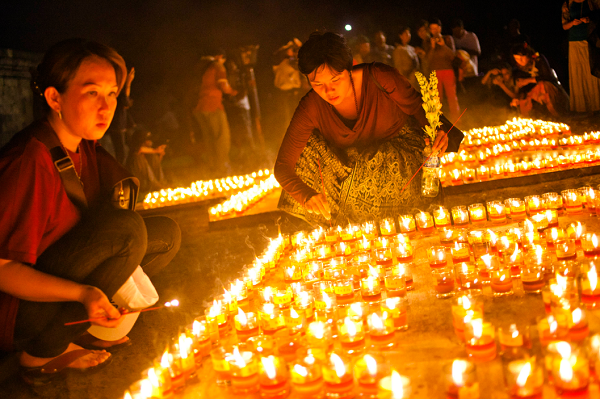When Is The Buddhist New Year? China, Vietnam, Korea Will Celebrate Mahayana Holiday

Mahayana Buddhists will celebrate the Buddhist New Year Thursday. The holiday will be celebrated predominately in areas of China, Vietnam, Mongolia, Tibet and South Korea, where Mahayana Buddhism is practiced. Although many Buddhist welcomed 2017 on Jan. 1 with the rest of the western world, the Mahayana New Year is typically celebrated when the first full moon of the year rises.
Like many new year celebrations in the West, the Mahayana New Year serves as a time to reflect on the past year and set goals for the future. Many observers will create new resolutions that will help further their journey to enlightenment. Some people will clean their homes, sweeping away any bad luck or energy that may have built up over the past year and make room for good things to come.
Although the West doesn’t necessarily view new year celebrations as a religious holiday, Mahayana Buddhism, however, does. While many Americans spend New Year’s Eve partying with friends and family and bottles upon bottles of champagne, many Mahayana Buddhists will spend the evening worshipping, praying and meditating in candle-filled temples and monasteries. Some will also bathe Buddha statues to show respect for Buddha while offering prayers and songs of happiness and peace honoring various deities.
As the Mahayana New Year is just around the corner, it's time to reflect on the unity of body & mind both in Buddhist & in Interfaith terms.
— Rev Dr Edgar Mihas (@Dr__Edgar_Mihas) January 11, 2017
It is also customary for Mahyana Buddhists to spend some time with family and friends on the Buddhist New Year during which time they will also exchange gifts.
The holiday is sometimes mistaken for the Lunar New Year, which is on Jan. 28, and is also celebrated by many Buddhist, especially in China who view the holiday as the Chinese New Year.
Although they follow similar teachings, Buddhist who follow Theravada practices will celebrate their new year with a three-day celebration in April. Considered southern Buddhism, because it’s mostly practiced in southern Asian countries like Thailand, Camboia and Laos, these celebrations are also marked as a time for reflection and prayer.
© Copyright IBTimes 2024. All rights reserved.





















